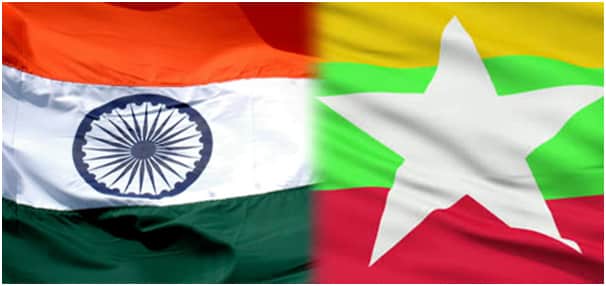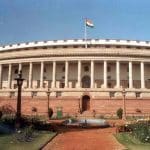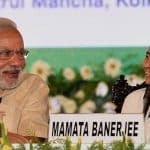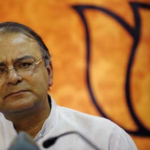A brief historical background of relations.
- Burmese first came close to British India in 1821 with the conquest of Assam in 1821.
The first Anglo-Burmese war was fought in 1826. The second Anglo-Burmese war was fought in 1852 and third in 1885. - In 1937, Burma, a predominantly Buddhist nation, was separated from British India. India gained independence in 1947 and Burma in 1948. Both countries practiced a common British parliamentary democracy system.
- India helped Burma in 1949 providing arms to the Burmese army and organizing loans from the Commonwealth nations.
- India under Prime Minister Rajiv Gandhi supported the pro-democracy movement and gave asylum to the Burmese refugees who fled the military crackdown.
India-Myanmar Relation
- India and Myanmar share a 1643 km long international border along India’s Northeast states Mizoram, Manipur, Nagaland and Arunachal Pradesh as well as a maritime boundary in the Bay of Bengal.
- Myanmar is our gateway to South East Asia and ASEAN with which we are seeking greater economic integration through India’s ‘Look East’ and ‘Act East’ Policy, and passage for the proposed Trans Asian highway and railway project. Furthermore, Myanmar also offers us an alternative access route to the Northeast.
- India and Myanmar are set to cooperate in military and help modernize Myanmar’s military.
- India aided Myanmar when cyclone “Nargis” hit it in May 2008 and also provided help of $1 million for humanitarian relief and rehabilitation in the areas affected by the severe earthquake in Shan State in March 2011. India also came forward as a helping hand after the cyclone “Komen” hit Myanmar in 2015.
Geopolitical Framework
- In 1994 India and Burma signed the border trade agreement and opened border trade outpost at Moreh (Manipur) in 1995 and at Champhai (Mizoram) in 2004. However, both the countries were reluctant to open the Stilwell Road which was constructed in 1942 by the Allied forces connecting Ledo (Assam) to Myitkyina (Burma) to Kunming (China).
- On 13 February 2001 India and Burma inaugurated 250 kilometre Tamu-Kalewa-Kalemyo highway, popularly called the Indo-Myanmar Friendship Road, built mainly by the Indian Army’s Border Roads Organisation.
- Both countries have agreed to build and improve a 4-lane, 3200km triangular highway connecting India, Myanmar and Thailand.
- The Kaladan Multi-modal Transit Transport Project will connect the eastern Indian seaport of Kolkata with Sittwe seaport in Myanmar by sea; it will then link Sittwe seaport to Lashio in Myanmar via Kaladan river boat route and then from Lashio on to Mizoram in India by road transport.Economic and Commercial Relations; Development Cooperation
- India stands as the largest market for Burmese exports and also 4th largest trading partner.
- India is also the seventh most important source of Burma’s imports.
- Bilateral trade grew from $424 million in 2004-05 to $1.067 billion in 2010-11 between the both nations.
- Both nations agreed to double bilateral trade to $3 billion by 2015.
- India has extended loans of US$ 297.43 million and grants of US$ 477.63 million for several infrastructure and public interest projects in health, education, agriculture etc.
- As of 2013, India has provided loan to Myanmar for its development, about US$500 million.
- India’s commitment to Myanmar’s development stands at US$ 2 billion.
Energy Security
- A peaceful Northeast has great potential to develop economically with its rich biodiversity, hydropower and precious mineral resources, once it is properly integrated to the Southeast Asian economy.
- Myanmar is an important partner in strengthening our energy security. Recognizing this, an MOU on Co-operation in the Petroleum Sector between MOP&NG and Ministry of Energy of Myanmar was signed during President’s visit to Myanmar in March 2006.
- Of all the heavy investments in the Myanmar, India has mostly invested in the field of oil and gas sector.
- ONGC Videsh Ltd. (OVL), GAIL and ESSAR are participants in the energy sector in Myanmar.
Security Concerns
- In 1967, India and Burma signed the boundary agreement to solve the border issue between the two countries. Burma also co-operated with India in its fight against the Northeast insurgents groups. India’s military aid to Myanmar was mainly directed for counter insurgency operations against the Northeast insurgent groups based in Myanmar. Myanmar is yet to take any major offensive against the Northeast insurgent groups. Burma’s support is necessary in pressurizing the Northeast insurgent groups for opening a dialogue with New Delhi.
- Given the geo-strategic factors as well as defence inter-linkage between India’s NER and Myanmar’s north-western region, it is natural that defence cooperation should be an important component of bilateral relations. This has witnessed a significant strengthening through a series of regular visits at high levels, provision of training facilities, visits by naval ships, supply of equipment and, above all, a continuing dialogue on professional matters and strategic issues. Comparing it to what the cooperation is between China and Myanmar is not the only way to measure it; an alternative is to compare the present-day defence cooperation to what had existed a decade back. A valid point though is that it has considerable potential for further expansion and diversification.
- Since long time negative activities like insurgency, violence, terrorism, smuggling and illicit trade in narcotics have been present on the India-Myanmar border. Two governments have come together to solve these irascible issue including annihilating activities like operations by certain Indian Insurgent Groups (IIGs) against Indian authorities, the ability of IIGs to use north-western Myanmar as a base or shelter, and the nexus between them and sources of arms supplies from third countries through Myanmar.
- Time to time border issues cause problems to both the nations and questions are aroused by India with a perception that albeit the support and cooperation of Myanmar army their methods are inadequate to which Myanmar has kept its view stating that greater infrastructure is the key to eradicate and secure the border from such activities to which both countries have come together in 2011 and 2012 to solve this serious issue. Although border security management remains a major issue in future for both.
MoUs signed during the recent President of Myanmar visit to India (29th August, 2016)
- MoU on Cooperation in the construction of 69 Bridges including AP Aproach Roads in the Tamu-Kyigone-Kalewa Road Section of the Trilateral Highway in Myanmar
- MoU on Cooperation in the construction/upgradation of the Kalewa-Yagyi Road Section.
- MoU on Cooperation in the Field of Renewable Energy.
- MoU on Cooperation in the field of Traditional Systems of Medicine
Future trends and Conclusion
- It is clearly evident that Myanmar plays an important and pivotal role not only linking India with the ASEAN and South-East Asian countries but also in eradicating insurgent groups in north-eastern parts of the Indian Territory.
- The first is where will be a direct economic development for India second will also help to India to pacify its north-eastern parts of peace and development both with the help of Myanmar.
- Moreover, Myanmar is not only a fresh economic opportunity for India to invest and garner; it is a chance to overcome the decades’ long neglect of Northeast India by linking its infrastructure and commerce with Myanmar. India could reignite the Bay of Bengal with a surge of commercial activity reviving its eastern ports.
- Also if both nations are determined then the illicit drug trafficking and inflow of narcotics/heroin from Myanmar into the alcohol prohibited states of Nagaland, Manipur and Mizoram can be extirpated completely.
- Myanmar which has recently gained democracy also seek forward to new developmental, political and economic reforms and India by helping can be on the better side of mutual benefits.
- An increasing consciousness in India about Myanmar’s importance should motivate academia, think tanks, NGOs, artists, media and strategic community to re-discover and strengthen links with their counterparts in Myanmar.











